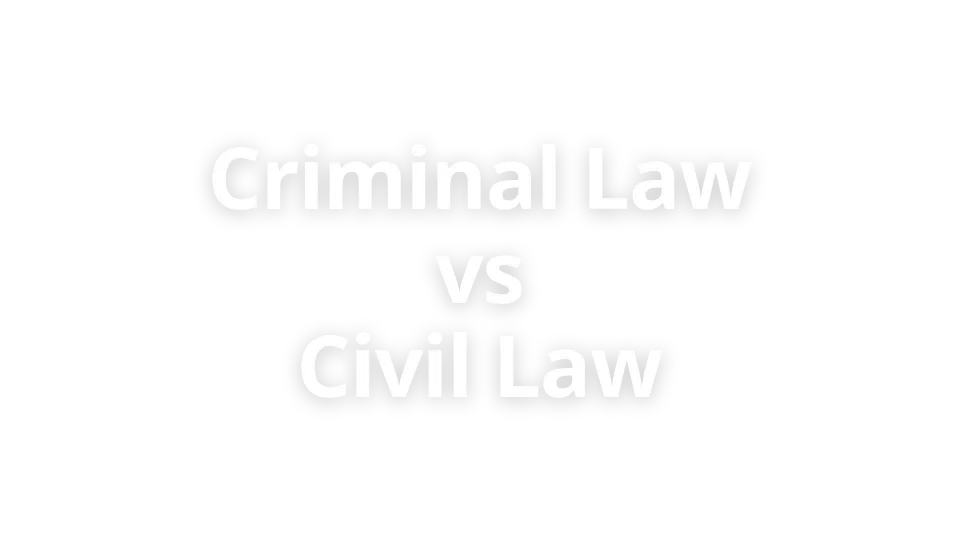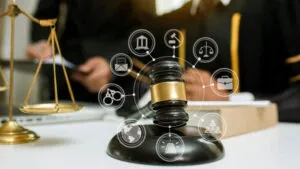Evidence In California Criminal Cases
Experienced California Criminal Defense Attorneys
If you have been charged with a crime in California, then you will want to speak to a criminal defense lawyer at My Rights Law right away. By hiring My Rights Law’s defense team, you get a firm with significant experience in winning cases. We will carefully review your situation and work tirelessly to defend you. Protect your rights by calling My Rights Law at (888) 702-8845 or completing our secure web form to set up a free consultation.
- 1. Introduction To Evidence
- 2. Examples Of Evidence
- 3. California Rules Of Evidence
- 4. Evidence Must Be Relevant
- 5. Evidence Must Be Reliable
- 6. Hearsay Evidence
- 7. The Judge Can Exclude Evidence
- 8. Excluding Lengthy Evidence
- 9. Confusing The Issues And Misleading The Jury
- 10. Creating Undue Prejudice
- 11. Consulting With A Criminal Defense Lawyer To Evidence
Introduction To Evidence
Evidence, a part of the criminal court process, is pieces of information that help prove or disprove facts. If there is enough evidence in a case, it’s possible to figure out who did it and why.
In criminal cases, the prosecutor and defendant give pieces of evidence to the jury. Each side will tell the jury what story the evidence should tell. The jury must decide which pieces of evidence they believe and which they should ignore to make a guilty or not guilty verdict.
California doesn’t allow every piece of evidence to be included in a criminal trial. Evidence needs to be relevant and reliable to be included in a trial. Judges can limit what evidence the jury hears in certain circumstances.
Examples Of Evidence
Evidence can take many different forms. Evidence can be things we see on TV shows like CSI, such as footprints, fingerprints, and hairs left at the crime scene. Scientists can be expert witnesses who testify how they matched DNA from the crime scene to the defendant.
Evidence can also consist of documents that tell a story, like emails, bank statements, or employment records. Evidence can be photographs of a crime scene or videos from security cameras that show a defendant was, or wasn’t, nearby when the crime took place.
Evidence can also come from witnesses who report what they heard and saw during a crime or witnesses who can provide an alibi to the defendant or prove that an altercation was in self defense.
Witnesses may also prepare visual aids, like charts, models, or even videos to explain their testimony. A police officer who investigated a burglary could use a floorplan of the house to show how the suspect entered the home and which rooms they entered.
California Rules Of Evidence
Before a trial starts, the prosecutor and defense attorneys will tell the judge what documents, witnesses, and other evidence they want to present to a jury. The judge will decide what evidence the jury can see based on the California Rules of Evidence.
California has rules listing what evidence can and can’t be used in criminal trials.[1] In general, the evidence must be relevant and reliable, and it cannot be confusing, misleading, or cause undue prejudice.
Evidence Must Be Relevant
California requires that evidence presented in criminal trials must be relevant to the case.[2] Relevant evidence is information that either proves or disproves facts that matter to the outcome of the case.[3] Relevant evidence can be presented to a jury. In contrast, irrelevant evidence is kept out of a trial.
If someone is charged with forgery, it isn’t relevant that they failed a math test in high school. However, evidence that they faked a parents’ signature on that failed math test can be relevant because it shows a history of forging signatures and faking documents.
Evidence Must Be Reliable
To present evidence in court, attorneys must prove that it is reliable. In other words, they need to establish a foundation for that evidence.
Establishing a foundation often relies on witness testimony.[4] A witness will tell the jury the story of the documents. In the example above, a school administrator could testify that the school’s disciplinary records show the fake signature in the defendant’s file and that the records are accurate.
Once a witness establishes the foundation for this evidence, the attorneys can discuss what the evidence does and doesn’t show and how it relates to the case.
Witnesses or documents can also be used to disprove the reliability of evidence. For example, another administrator could testify that the school disciplinary records have several clerical errors. This evidence may show that these records are unreliable.
Hearsay Evidence
Hearsay evidence is when:
- Someone who is not testifying makes a statement outside of court,
- The witness who is testifying repeats that statement
- And that statement is treated as fact in court.[5]
Hearsay evidence is not considered reliable because it’s too far removed from the courtroom. There’s no way for a judge or jury to decide if the person who made the original statement is telling the truth.
If Jill says, “Jack told me Phil forged a signature on the contract,” the jury can’t believe that Phil forged a signature. Jack isn’t making this statement in court, so there’s no way to question him to see how he knows this or whether Jack is honest. However, as long as the jury doesn’t treat Jack’s statement as the truth, Jill can use Jack’s statement to explain why she did something next.
The Judge Can Exclude Evidence
Finally, even if the evidence is relevant and reliable, the judge can decide to exclude evidence from the jury if it will take too much time in a trial or if it creates a risk of confusing the issues, misleading the jury, or creating undue prejudice.[6]
When reviewing evidence, judges balance relevance and reliability against these concerns.
Excluding Lengthy Evidence
Some pieces of evidence are simply too long and not relevant enough to be fully included in a trial. Courts don’t have unlimited time or money for trials to go on indefinitely.
Pieces of evidence like a company’s full financial records, or all of its internal emails, can be too long to include in a trial. Instead, judges may limit these records so the jury only hears the most relevant pieces.
Confusing The Issues And Misleading The Jury
Judges can also exclude witness testimony or evidence when the information confuses the issues or mislead the jury. This may happen with “expert” witnesses who don’t have a background in the area they’re testifying about or who peddle bunk science.
Judges need to ensure that juries hear accurate information so their verdict will be made on correct facts.
Creating Undue Prejudice
Finally, judges exclude evidence that is likely to prejudice the jury. Some evidence might upset or anger jury members and make them unable to see past these emotions to make a fair decision.
In a violent crime, large graphic pictures that fill the courtroom may be unduly prejudicial, but smaller-sized photographs of the crime scene may be allowed.
Consulting With A Criminal Defense Lawyer To Evidence
Evidence comes in many forms to tell a story about what did and didn’t happen. Not all evidence can be included in a criminal trial.
California’s Rules of Evidence restrict the evidence prosecutors and defendants present in a criminal trial. Evidence must be relevant and reliable before it can get in front of a jury. Judges also have the power to balance the relevance of evidence against other factors and can exclude evidence in certain circumstances.
Understanding how these rules of evidence play out is important because they can make or break a criminal case.
FOOTNOTES
[1] California Evidence Code 403
[2] California Evidence Code 350
[3] California Evidence Code 210
[4] California Evidence Code 1400
[5] California Evidence Code 1200
[6] California Evidence Code 352








